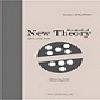On Bipolar Soft Topological Spaces
In this present study, some properties of bipolar soft closed sets are introduced and the concept of closure, interior, basis and subspaces which are the building blocks of classical topology are defined on bipolar soft topological spaces. In addition, examples have been presented so that the subject can be better understood.
Keywords:
Bipolar soft set, bipolar soft topology, bipolar soft topological spaces, bipolar soft open(close), bipolar soft interior bipolar soft basis,
___
- [1] Atanassov K., Intuitionistic fuzzy sets, Fuzzy Sets and Systems, 20, (1986), 87-96.
- [2] Bayramov S, Gunduz C., Soft locally compact spaces and soft paracompact spaces, J. Math. Sys. Sci., 3, (2013), 122-130.
- [3] Cagman N., Karatas S., Engino¸glu S., Soft topology, Comput. Math. Appl., (2011), 351-358.
- [4] Karaaslan F. and Karatas S., A new approach to bipolar soft sets and its applications, Discrete Math. Algorithm. Appl., 07, (2015), 1550054.
- [5] Maji P. K., Biswas R., Roy A. R., Soft set theory, Comput. Math. Appl., 45, (2003), 555-562.
- [6] Molodtsov D., Soft Set Theory-First Results, Comput. Math. Appl., 37, (1999), 19-31.
- [7] Senel G. and Cagman N., Soft topological subspaces, Annals of Fuzzy Mathematics and Informatics, 10.4, (2015), 525-535.
- [8] Shabir M. and Bakhtawar A., Bipolar soft connected, bipolar soft disconnected and bipolar soft compact spaces, Songklanakari J. Sci. Technol., 39(3), (2017), 359-371.
- [9] Shabir M. and Naz M., On bipolar soft sets, Retrieved from https://arxiv.org/abs/1303.1344, (2013).
- [10] Shabir M., Naz M., On soft topological spaces, Comput. Math. Appl., 61, (2011), 1786-1799.
- [11] Zadeh L. A., Fuzzy Sets, Inform. Control, 8, (1965), 338-353.
- Yayın Aralığı: 4
- Başlangıç: 2014
- Yayıncı: Naim Çağman
